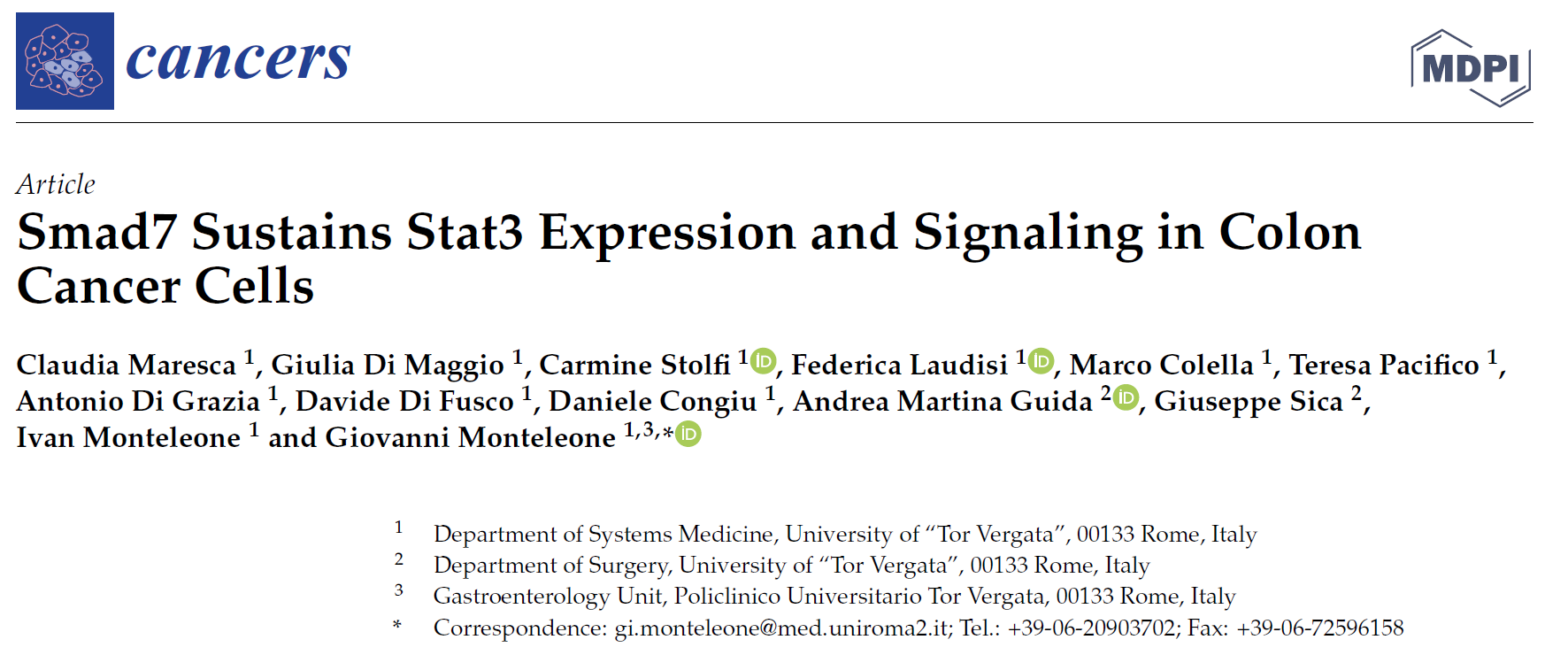
Simple Summary & Abstract
Simple Summary: Colorectal cancer (CRC) cells contain elevated levels of Stat3 and Smad7, two proteins involved in the growth and survival of neoplastic cells. This study was aimed at examining whether Smad7 positively controls the expression of Stat3 in CRC cells. By employing antisense technology, which specifically inhibits Smad7 expression in selected cells, we hereby show that the reduction of Smad7 in CRC cells is paralleled by the marked suppression of the levels of Stat3 and of Stat3-related genes. Finally, we provide evidence that in human CRC tissue samples, there is a positive correlation between Smad7 expression and Stat3 content. Overall, these findings delineate a novel positive feedback loop that sustains CRC cell behavior and suggest that Smad7 is a target for therapeutic intervention in patients with such a disease.
Abstract: Colorectal cancer (CRC) cells contain elevated levels of active signal transducer and the activator of transcription (Stat)-3, which exerts proliferative and anti-apoptotic effects. Various molecules produced in the CRC tissue can activate Stat3, but the mechanisms that amplify such an activation are yet to be determined. In this paper, we assessed whether Smad7, an inhibitor of Transforiming Growth Factor (TGF)-β1 activity, sustains Stat3 expression/activation in CRC cells. Both Smad7 and phosphorylated (p)/activated-Stat3 were more expressed in the tumoral areas of CRC patients, compared to the normal adjacent colonic mucosa of the same patients, and were co-localized in primary CRC cells and CRC cell lines. The knockdown of Smad7 with a Smad7 antisense oligonucleotide (AS) reduced p-Stat3 in both unstimulated and interleukin (IL)-6- and IL-22-stimulated DLD-1 and HCT116 cells. Consistently, reduced levels of BCL-xL and survivin, two downstream signaling targets of Stat3 activation, were seen in Smad7 AS-treated cells. An analysis of the mechanisms underlying Smad7 AS-induced Stat3 inactivation revealed that Smad7 AS reduced Stat3 RNA and protein expression. A chromatin immunoprecipitation assay showed the direct regulatory effect of Smad7 on the Stat3 promoter. RNA-sequencing data from the Tumor, Normal and Metastatic (TNM) plot database showed a positive correlation between Smad7 and Stat3 in 1450 CRC samples. To our knowledge, this is the first evidence supporting the theory that Smad7 positively regulates Stat3 function in CRC.
